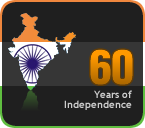A neighbour’s house was made ready for the bridegroom’s party to stay for the duration of the wedding. The occupants of this house would stay with other neighbours for this period. The house, well swept and mopped was decorated with festoons of mango leaves at the entrance door and big beautiful kolams were drawn on the well swept front yard and all the rooms.
The inside kolams were drawn with well ground rice paste, so that they would last for a few days. In the main hall a big bell metal oil lamp would be lit and remained burning. In front of this lamp were place a plateful of betel leaves, nuts, whole turmeric, bananas and two coconuts.

On one side of this were placed in bell metal dishes the various oil – gingelly, coconut – turmeric, soapnut powder, and umikkeri (burnt rice husk for brushing teeth) - all ready for the morning ablutions. On another side, vibuthi, the sacred ash and kukumam for the ladies and sandal paste were also placed. Those days soaps and toothpaste were unheard of.
 For sleeping at night plenty of mats (made of dried grass) and jamakkalams, thick sheets in bright patterns,(see picture) were readied. The weather being most accommodating, nothing more was required for a good night’s sleep. (For Viji’s wedding in 1974, we had arranged a vacant flat in West Kidwai Nagar, where we lived, with the permission of the local authorities for the bridegroom’s people to stay.)
For sleeping at night plenty of mats (made of dried grass) and jamakkalams, thick sheets in bright patterns,(see picture) were readied. The weather being most accommodating, nothing more was required for a good night’s sleep. (For Viji’s wedding in 1974, we had arranged a vacant flat in West Kidwai Nagar, where we lived, with the permission of the local authorities for the bridegroom’s people to stay.)
A nadaswaram troupe at a temple procession
Once the bridegroom’s party arrived at the street corner, they were welcomed by the bride’s people warmly to the accompaniment of the auspicious notes of the nadaswaram and escorted to the house arranged for them. After serving them lunch or tiffin, depending on the time of their arrival, they were requested to rest and refresh themselves for the evening function – mappilai azhaippu and nitchiya thartham.
Well, the bridegroom’s party needed all the rest they could avail of, for they were on the road for three four or five days, depending on the place they were coming from. Then mode of travel in those days was the bullock cart. The maximum distance on could travel in a day was seven, eight or ten miles, depending upon the mood of the bullock. The cartcade consisted of six to seven cars according to the number of people travelling. One cart was set apart for the stuff needed to prepare food on the way, for those were hotel less days – including firewood, utensils, groceries and vegetables, as also fodder for the bullocks. Every evening when the carts reached a riverside, or an open space with a well, the journey was stopped for the day. Stretching their cramped bodies and taking baths, they partook of the packed food prepared in the morning before they took the road. In the mornings, the women getting up early, and after a bath , would cook enough for both meals. So by the time they reached the bride’s place, everyone was pleasantly tired, looking forward to the five days of wedding rites and feasts.
Here I would like to share how we travelled from Trivandrum to Allepey for my brother’s wedding in 1937. He was just 22 and my Manni 15. The bridegroom’s party included a number of my brother’s friends and not only our own uncles and aunts on both our parents’ side, but also uncles and aunts of my parents. The wedding of the eldest son in the family definitely was not to be missed by anyone. We left our home early in the morning by 5 am in a hired bus, and reached Quilon around 9.30. From Quilon we travelled by boat to Alleppey, reaching there by dusk. We had a break for lunch at a small island called Ponmudi. The lunch was arranged by our tuition master Anantharama Iyer.
The distance from Trivandrum to Allepey is about 160 kilometers which is covered today by road in three or four hours. The mappila azhaippu procession started from the boat jetty itself. My brother was seated in a horse drawn open coach, surrounded by children on all sides, and taken as a procession to the wedding place. The others either walked, or came by car.
The mappillai azhaippu is a function which takes place on the evening before the wedding.
To be continued
Nadaswaram photo courtesy: Internet







2 comments:
That was such a beautiful description of the wedding.. Brought back memories for me :) It was almost like being there:)
Hi,
It is nice to visit your blog. I see that MysoreBlogPark carries excerpts from other interesting blogs. I would appreciate if you can visit mine at http://drparva.blogspot.com/ and see if you can use some of it.
Regards.
Post a Comment